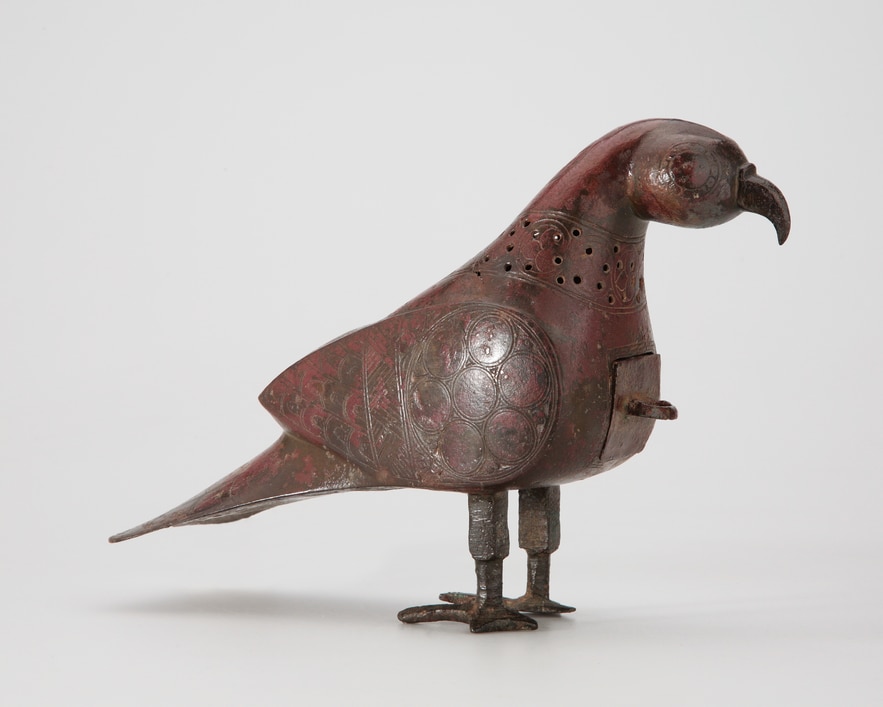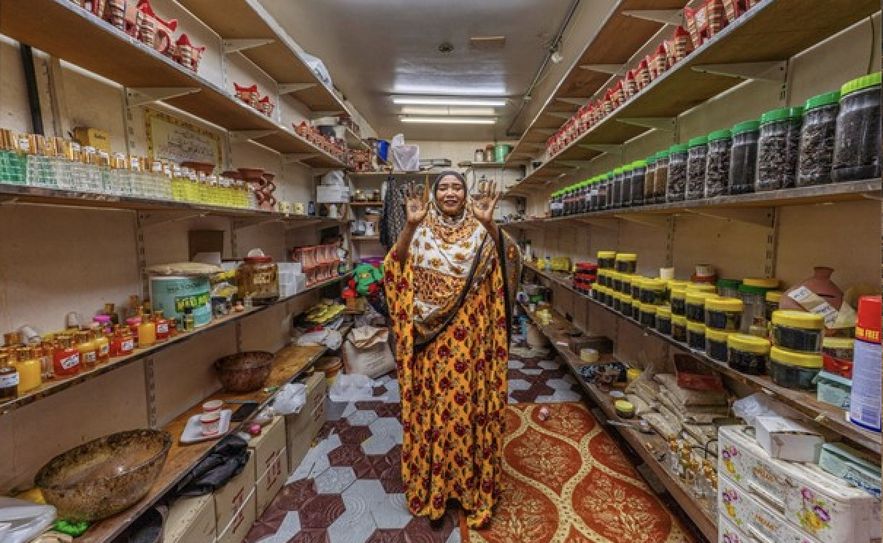It was during a summer internship at Charabot in Grasse that, at barely 20 years old, Christopher Sheldrake saw his destiny written in fragrances. Having become, over the course of his multiple creations, a renowned nose, he collaborated with Chanel, Quest, and especially Serge Lutens, for whom he created a number of emblematic bottles, including, in 1992, the revolutionary Femininity of Woodthe first woody feminine perfume, or, more recently, spicy Black pepper. His fascination with oriental scents, whose universe and origins he has continued to explore, is known to all aesthetes and has now earned him the role of being the one-man orchestra of an olfactory journey to accompany the captivating exhibition Oriental perfumes deployed at the Institute of the Arab World (IMA)*, under the leadership of art historians Hanna Boghanim and Agnès Carayon. The perfumer spoke to L’Express during a thoughtful interview.
L’Express: We can say that you were born into scents…
Christopher Sheldrake: Yes, I was born in Madras, where my father ran a factory extracting spices and raw materials used in perfumes. For the child I was, it was the awakening of what we all have: a nose. This memory associated with a smell that we generally use without thinking. In India, I constructed an olfactory language made up of memories: the scent of teak and sandalwood from the furniture, the amber of the beaches at setting sun, the eucalyptus forests in the hills of Kodaikanal, the harvests with their fragrant humidity , spices from open-air markets… When I returned to England at the age of 11, where there were much fewer smells and where they were very different, I was very clearly aware of this change olfactory. This is what the perfumer’s job is: bringing the sense of smell back into consciousness.
Denis Dailleux, “Gathering in the heights of the Middle Atlas”, Morocco, 2015.
/ © Denis Dailleux
Subsequently, having become a “nose”, you gave free rein to your fascination for these oriental perfumes whose origins and uses the IMA now traces…
Although I am a creator of my time, I have always been fascinated by the origin of raw materials. Discover how Ylang Ylang, this exotic flower which grows in the trees of the Comoros, and which is native to the Philippines, came to us. Find out who had the idea of putting ambergris from the sperm whale in a perfume, which floats for decades before washing up on the beaches and gradually taking on the appearance of a stone. Know the history of Oud, the precious Agarwood which grows in the Orient and which, infected by a fungus, produces a divine scent.
Would you say that you are an orientalist perfumer?
Yes, absolutely. I was intrigued very early on by The Song of Songs, which is also mentioned in the exhibition, and which allowed me to delve into the world of sacred perfumes. Thanks to my job, I have traveled a lot, read a lot, and got into the habit of recording in a notebook my personal discoveries and the revelations gleaned from Flavius Josephus, Pliny the Elder, Théodore Monod, José-Marie Bel or in the ‘Old Testament.
What are the emblematic scents of the Orient?
The oldest, dating back several millennia, are myrrh and frankincense, coming from both shores of the Red Sea: Ethiopia, Somalia, Yemen, Oman. There is a high concentration of ingredients used for perfumes in the Middle East and India, which were then treasures exchanged on trade routes. We can also of course cite saffron from Iran, the rose from Syria or that from Saudi Arabia, the Taif.

Incense burner in the shape of a dove, Khorasan (Iran), 12th century.
/ © The Khalili Collections
Is the oriental perfume stronger, more pronounced than the western one, or is this a preconceived idea?
We often have this idea that an oriental perfume is spicy, loaded with animal notes like musk, and it is true that it is often more sensual, carnal, opulent. There is a richness, a depth. European perfumery takes more freshness, with notes of lily of the valley, rose… But I am very afraid of generalizing because, in our latitudes, we also like vanilla, spicy notes, balsy, woody, resinous scents. It’s simply that in the West there are several trends and they exist at the same time.
For the exhibition, you created around thirty scents.
Yes, with the help, for some, of perfumer Nisrine Bouazzaoui. The aim is, through these aromas, to explain what oriental perfumery is. We thus enter the exhibition through the ingredients: the ambergris of the sperm whale, the musk which comes from the buckshot between Siberia and the Himalayas, the Oud with a very sensual note, the flowers, including Saffron which is the key ingredient in Arab perfumery – even the prophet talks about it! -, the jasmine of the night or Mesk Ellil in Arabic, which opens at night and gives off a very particular smell…

Vladimir Antaki, “The Guardians – Fariza Iskandar Mbarrak”, Muscat (Oman), 2023.
/ © IMA museum/ Vladimir Antaki
You also designed a perfume table which directly appeals to the public…
The idea is to break down a fragrance so that the visitor understands, with their nose, how it is made. For example, I broke down an amber perfume, first with a first component, cistus labdanum, a plant that grows around the Mediterranean, then it is associated with vanilla balsam notes and finally enriched with a fresh note of geranium and coriander.
Is it complicated to introduce olfactory elements into an exhibition?
Our decision was to offer a sufficiently wide variety of notes which allow visitors, once the tour is finished, to have an overall memory of everything they saw: the objects, some of which are very old, around oriental perfumery, photographs, videos, sounds. Despite the logistical constraints they impose, I am convinced that we will see more and more multisensory experiences in museums. The important thing is that it doesn’t turn into a gimmick, that the associations remain authentic.
* Exhibition to discover until March 17, 2024 at the Institute of the Arab World, in Paris.
